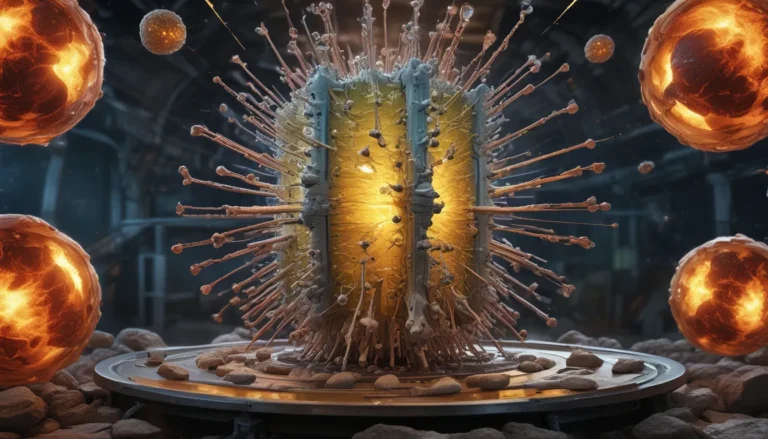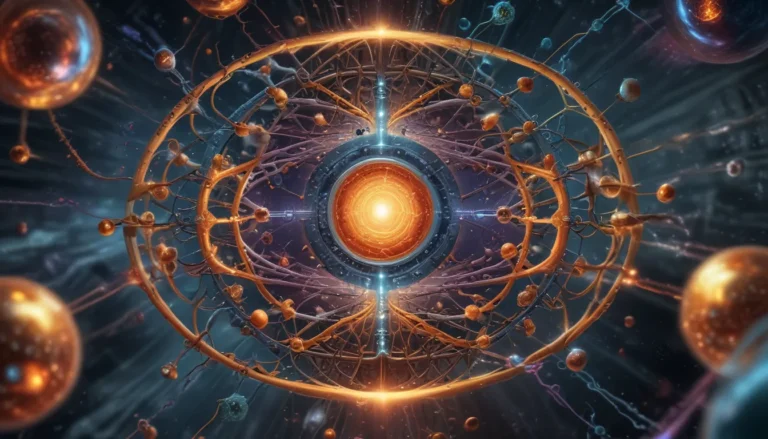A Note About Images: The images used in our articles are for illustration purposes only and may not exactly match the content. They are meant to engage readers, but the text should be relied upon for accurate information.
Welcome to the captivating world of isothermal processes, where temperature remains constant, but other parameters such as pressure and volume may change. This unique concept in physics has significant applications in thermodynamics, gas dynamics, and engineering. In this detailed article, we will delve into the fascinating realm of isothermal processes and uncover 12 astonishing facts that shed light on their intriguing nature. From understanding the laws governing these processes to their practical implications in everyday life, we will embark on a journey of discovery to unravel the mysteries behind isothermal processes.
Understanding Isothermal Processes
The isothermal process is a thermodynamic phenomenon where the temperature of a system remains constant. This means that as the system undergoes changes, such as expansion or compression, the temperature remains unchanged throughout the process. This crucial aspect of isothermal processes forms the foundation for various applications in physics and engineering.
Isothermal Expansion and Compression in Real Life
Contrary to being merely theoretical, isothermal expansion and compression occur in practical scenarios. For instance, the expansion and compression of gases in engines, like the cylinders of an internal combustion engine, can be approximated as isothermal processes. This real-world application highlights the relevance and significance of understanding isothermal processes.
Visual Representation on Pressure-Volume Graphs
On a pressure-volume graph, an isothermal process is graphically represented by a horizontal line. This visual representation serves as a key indicator of the constant temperature characteristic of isothermal processes. The product of pressure and volume remains constant during an isothermal process, reflecting the unique nature of this phenomenon.
The Intricacies of Isothermal Processes
Work Calculation in Isothermal Processes
The work done on or by the system in an isothermal process is dependent on the type of gas involved. For an ideal gas, the work done can be calculated using the equation W = nRT ln(Vf/Vi), where various parameters such as the number of moles of gas, temperature, and initial and final volumes come into play. This work calculation provides insights into the energy dynamics of isothermal processes.
Achieving Isothermal Conditions through Slow Heat Transfer
To achieve an isothermal process, heat transfer must occur slowly. This gradual exchange of heat with the surroundings allows the system to maintain a constant temperature. By minimizing temperature gradients within the system, slow heat transfer ensures the preservation of isothermal conditions throughout the process.
Practical Applications and Implications
Reversibility of Isothermal Processes
An isothermal process is considered reversible, as it can be reversed without any alterations to the system or its surroundings. This reversibility aspect highlights the consistent and predictable nature of isothermal processes, making them valuable in various applications requiring precise control and manipulation of thermodynamic conditions.
Utilization in Heat Engines
The isothermal process plays a pivotal role in the operation of heat engines, such as the Stirling engine. Through isothermal expansion and compression of the working fluid, heat engines efficiently convert thermal energy into mechanical work. This practical application demonstrates the significance of isothermal processes in energy conversion.
Contribution to Ideal Gas Behavior Understanding
Studying isothermal processes is crucial for comprehending the behavior of ideal gases. By exploring the relationship between pressure, volume, and temperature through isothermal processes, scientists gain insights into ideal gas behavior as described by the ideal gas law: PV = nRT. This foundational knowledge serves as a cornerstone for further advancements in gas dynamics and thermodynamics.
Ensuring Energy Conservation in Thermodynamic Systems
Energy conservation is a fundamental principle in thermodynamics, and isothermal processes contribute to maintaining this conservation. The constant temperature characteristic of isothermal processes ensures that energy is conserved throughout the process, demonstrating the practical implications of this phenomenon in various engineering applications.
Practical Utilization and Relevance
Relationship to Reversible Heat Transfer
The concept of reversible heat transfer is closely related to isothermal processes, where heat flows between two bodies at a constant temperature. This connection is instrumental in various cooling and heating applications, such as refrigerators and air conditioners, where maintaining precise temperature conditions is essential for efficient operation.
Insights into Phase Transitions
The study of isothermal processes extends beyond ideal gases to include phase transitions. Processes like water boiling at a constant temperature exemplify isothermal processes, where energy is utilized to break intermolecular bonds rather than increasing temperature. This understanding of phase transitions enhances our knowledge of material behavior under specific thermodynamic conditions.
Precision in Scientific Measurements
Isothermal processes provide a valuable tool for conducting precise measurements in scientific experiments. By maintaining a constant temperature, scientists can accurately analyze system changes without the interference of temperature fluctuations. This precision allows for detailed observations and in-depth understanding of complex phenomena.
Conclusion: Unveiling the Essence of Isothermal Processes
In conclusion, the world of isothermal processes is filled with remarkable characteristics and practical applications that shape our understanding of thermodynamics and energy conversion. From the fundamental principles governing ideal gas behavior to the intricate details of heat engines and refrigeration systems, isothermal processes play a vital role in various fields of science and engineering. By exploring the mysteries behind isothermal processes, we gain insights into the captivating world of thermodynamics and its profound impact on modern technologies.
Exploring Further Possibilities: The Carnot Cycle
Delve deeper into the realm of thermodynamics by unraveling the elegance and significance of the Carnot cycle. Named after French physicist Nicolas Léonard Sadi Carnot, this theoretical heat engine achieves maximum efficiency, showcasing the fundamental principles governing energy conversion. Prepare to be amazed by the elegance and significance of the Carnot cycle as you explore its practical applications and implications in advancing our understanding of thermodynamics.
FAQs: Navigating Isothermal Processes
- What is an isothermal process?
-
An isothermal process is a thermodynamic process where the temperature of a system remains constant throughout the process.
-
What are the characteristics of an isothermal process?
-
Isothermal processes are characterized by constant temperature, slow heat transfer, and a horizontal line on a pressure-volume graph.
-
Why are isothermal processes important?
-
Isothermal processes are essential in fields like thermodynamics and engineering, providing insights into gas behavior and facilitating the design of efficient systems.
-
How does an isothermal process differ from an adiabatic process?
-
In an isothermal process, temperature remains constant, whereas in an adiabatic process, no heat is exchanged with the surroundings, leading to rapid temperature changes.
-
Can you provide an example of an isothermal process?
-
The expansion or compression of a gas in a piston-cylinder system undergoing thermal equilibrium with the surroundings represents an isothermal process.
-
Are isothermal processes reversible?
-
Isothermal processes can be reversible under specific conditions of thermodynamic equilibrium, but achieving complete reversibility in real-world scenarios can be challenging.
-
How are isothermal processes utilized in refrigeration?
-
Isothermal processes are crucial in refrigeration systems to maintain constant temperatures during the cooling process, ensuring efficient and effective cooling.
-
What is the relationship between isothermal processes and the ideal gas law?
-
Isothermal processes obey the ideal gas law, expressing the relationship between pressure, volume, temperature, and the number of gas molecules in ideal gas behavior.
-
Can an isothermal process occur in a closed system?
-
Yes, an isothermal process can occur in a closed system where heat exchange with the surroundings maintains a constant temperature, enabling isothermal conditions.
-
Are all processes in nature isothermal?
- No, most natural processes involve temperature changes, making isothermal processes a specific occurrence under controlled conditions of heat transfer and thermal equilibrium.
Explore the fascinating world of isothermal processes and uncover the mysteries behind these captivating phenomena that shape our understanding of thermodynamics and energy dynamics. Dive into the elegance of the Carnot cycle and broaden your knowledge of theoretical concepts that drive modern technologies and advancements in science and engineering.






